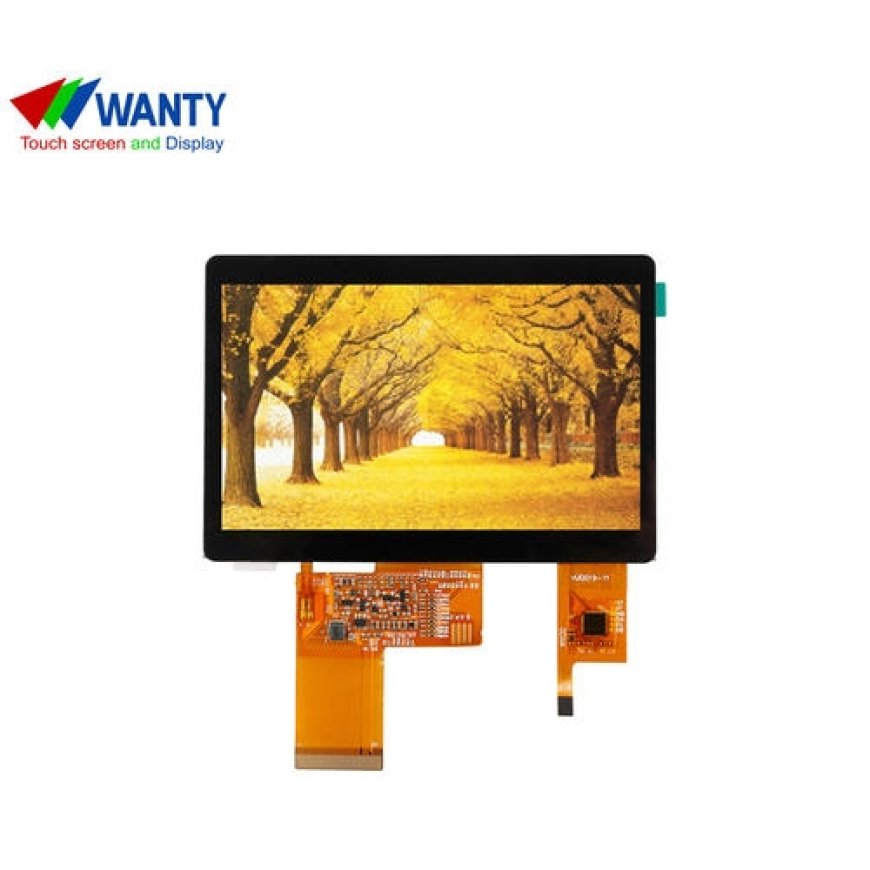The Impact of Medical Capacitive Touch Screens

Introduction
In the ever-evolving landscape of healthcare technology, medical capacitive touch screens have emerged as pivotal tools, transforming the way medical professionals interact with information and patients. This comprehensive exploration delves into the multifaceted world of these touch screens, examining their applications, benefits, and the profound impact they have on healthcare delivery.
I. Understanding Medical Capacitive Touch Screens
Evolution of Medical Interfaces
Medical capacitive touch screens represent a leap forward in user interfaces within healthcare settings. The evolution from traditional input methods to touch-based interfaces has streamlined processes, enhanced efficiency, and improved overall patient care.
Capacitive Touch Technology in Healthcare
Capacitive touch technology, the foundation of these screens, utilizes the electrical properties of the human touch for detection. This technology ensures a responsive, hygienic, and durable solution for medical professionals working in diverse healthcare environments.
II. Components and Design of Medical Capacitive Touch Screens
Robust Display Technology
These screens feature robust display technologies tailored for the healthcare sector. High-resolution screens with anti-glare properties ensure clear visuals, facilitating accurate and detailed medical data representation.
Ergonomic and Hygienic Design
The design of medical touch screens prioritizes ergonomics and hygiene. Sealed and smooth surfaces are easy to clean, reducing the risk of cross-contamination and supporting stringent hygiene standards in healthcare settings.
III. Applications Across Healthcare Settings
Electronic Health Records (EHR) Management
In hospitals and clinics, medical capacitive touch screens play a vital role in EHR management. Healthcare professionals can navigate, update, and retrieve patient records efficiently, enhancing the accuracy and accessibility of medical information.
Diagnostic Imaging Interfaces
Within diagnostic imaging, such as radiology and ultrasound, capacitive touch screens enable precise control and manipulation of images. Professionals can zoom, pan, and analyze medical images with intuitive touch gestures.
IV. Seamless Integration with Medical Devices
Integration with Monitoring Devices
Medical capacitive touch screens seamlessly integrate with monitoring devices. From adjusting parameters to viewing real-time data, healthcare professionals can monitor patient vitals and ensure timely interventions.
Surgical Navigation Systems
In surgical settings, these touch screens enhance precision. Surgical navigation systems with capacitive touch interfaces allow surgeons to interact with imaging data during procedures, contributing to surgical accuracy.
V. Benefits for Healthcare Professionals
Improved Workflow Efficiency
These screens streamline workflows for healthcare professionals. Quick and intuitive interactions contribute to faster data input, retrieval, and decision-making, enhancing overall operational efficiency.
Enhanced Data Accuracy
The accuracy of medical data is paramount. Capacitive touch screens, with their responsive nature, minimize input errors, ensuring that medical professionals work with precise and reliable information.
VI. Patient-Centric Applications
Interactive Patient Education
The capacitive touch screens serve as tools for interactive patient education. Professionals can use these interfaces to explain medical conditions, treatment options, and postoperative care plans directly to patients.
Entertainment and Comfort
In healthcare settings, capacitive touch screens provide entertainment options for patients. Bedside terminals with touch interfaces offer a range of entertainment and communication services, contributing to patient comfort and satisfaction.
VII. Challenges and Solutions
Infection Control Challenges
Maintaining hygiene is crucial in healthcare settings. Capacitive touch screens address infection control challenges through their smooth, easy-to-clean surfaces, reducing the risk of bacterial transmission.
Impact of Harsh Cleaning Agents
The use of harsh cleaning agents can affect touch screen durability. Manufacturers address this challenge by employing durable materials and coatings, ensuring screens withstand rigorous cleaning protocols.
VIII. Future Trends in Medical Capacitive Touch Screen Technology
Integration with Artificial Intelligence (AI)
The future of touch screens involves deeper integration with artificial intelligence (AI). These interfaces may leverage AI algorithms to assist in diagnostics, treatment planning, and personalized patient care.
Advancements in Telemedicine
Medical screens are anticipated to play a pivotal role in the ongoing growth of telemedicine. Remote patient monitoring and virtual consultations will be facilitated through advanced touch interfaces, enhancing healthcare accessibility.
IX. Regulatory Compliance and Standards
Meeting Healthcare Regulations
Manufacturers of medical screens adhere to stringent healthcare regulations and standards. Compliance with regulations ensures that these devices meet the necessary safety and performance criteria for use in healthcare environments.
User Training and Compliance
Healthcare professionals undergo training to effectively use medical capacitive touch screens. Ensuring user compliance with established protocols contributes to the seamless integration of these interfaces into healthcare workflows.
X. Conclusion
In conclusion, medical capacitive touch screens stand at the forefront of technological advancements in healthcare. These interfaces bring efficiency, accuracy, and patient-centric applications to the forefront of medical practice. As we anticipate further innovations, the integration of medical capacitive touch screens continues to redefine how healthcare professionals engage with information, collaborate, and deliver patient care, ushering in a new era of precision and accessibility in healthcare technology.












